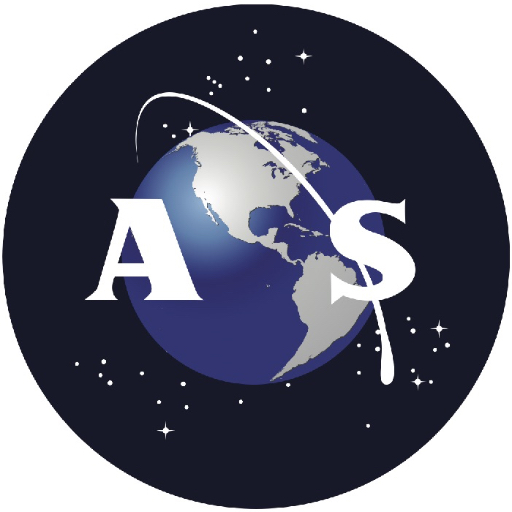
The stuff of dreams arrived at Kennedy Space Center this week. The Morpheus project flew in from Texas to conduct test flights of its special new lander and the special technology payload it carries.
The Morpheus lander is a special technology demonstration program. The lander is fueled by liquid methane, an unusual fuel for a rocket. NASA has several motivations for investigating this new fuel. First, a liquid oxygen/liquid methane combination could replace the toxic hypergolic fuels NASA currently uses on spacecraft. Second, that fuel combination could enable future vehicles to refuel using a technique called in-situ resource utilization, or ISRU for short. ISRU means using materials available at the exploration site astronauts may be visiting to sustain the mission. NASA is working on technology to produce oxygen from lunar dust and methane from the atmosphere of Mars. Additionally, LOX/methane is 10 to 20 times cheaper than hypergols.

The initial Morpheus lander used an engine developed in part by Armadillo Aerospace under an Innovative Partnership Program with Johnson Space Center. Armadillo’s engineers are experts at rapid design and fabrication. This allowed Morpheus to take shape rapidly.
Initial tests took place at Johnson Space Center and were tethered tests, the lander was attached to a crane.

During its time at JSC, It received a new engine, this one designed by civil servant Rob Moorehead. This engine is an improvement on the old, having 4200 pounds of thrust. New avionics and and power systems were also added. The tests that will take place at KSC, starting on Friday, will be free flight tests, ultimately ending in a test of another NASA technology project, ALHAT.
The ALHAT team describes their mission thus:
“In 2006 we were basically told to go figure out how to do autonomous precision landing with real-time hazard detection and avoidance, on any planetary surface, almost anywhere on the planet, and under any lighting conditions,” Project Manager Dr. Chirold Epp said. “No technology like that has ever existed. No one had ever done this before and NASA told them [us] to – just go do it.”
And they did it. With the assistance of NASA’s Dryden Flight Research Center and JPL the team developed a complete system that could guide a spacecraft down from orbit and allow it to pick out a safe landing spot in a designated location and continue guiding the spacecraft all the way until touchdown.
The ALHAT system proceeds in three phases. First, as the lander approaches the surface, it images the area and compares it to images taken by an orbital reconnaissance craft; this is called Terrain Relative Navigation. Next, once the lander is within 1000 m of the surface, it initiates the Hazard Detection system. It uses a special flash lidar to create a 3D digital elevation model of the landing site, and chooses the best spot from that model. Last, the lander continues to monitor its descent by choosing one hazard at a known distance from the landing spot it picked out and navigates relative to that hazard.

At the same time, a new instrument developed by the ALHAT team is employed: a Doppler lidar velocimeter. This instrument is able to determine the exact speed of the lander with accuracy an order of magnitude better than any existing instrument.
This entire process of examining the terrain and picking a landing spot takes the ALHAT hardware a total of 10 seconds, 4 to collect the data and 6 to analyze it and select a site. This technique is very processor-intensive. In order to ensure the system could complete its work in time, the team used a special multi-core prototype chip developed by the National Reconnaissance Office.

The Morpheus lander project and the ALHAT project were combined to be tested at KSC. After three months of progressively more strenuous tests, the Morpheus lander will execute an all-up test of both the lander and ALHAT. The lander will be set up on a launch pad 1.1 km away from a special hazard field set up beyond the north end of the Shuttle Landing Facility. This field 100 m by 100 m of terrain derived from models of the lunar South Pole. It is covered by material taken from the Crawlerway. Craters are built up from Crawlerway material, as are two mounds. Piles of cement debris are set up in a very specific pattern to simulate rock hazards.
The Morpheus lander will take off from its spot 1.1 km away and fly up to an altitude of 500 m, then toward the hazard field at 60-70 mph. The ALHAT system will be engaged and it will select one of four spots in the field to land on.
The two key technologies being tested here are the LOX/methane engine and the ALHAT system. Neither technology is being considered for a specific mission, rather, they can be applied to any landing mission, manned or unmanned.

The LOX/methane engine can be used either for a planetary landing or even a purely orbital vehicle.
The ALHAT system could enable precision landing on any planetary surface for either a robotic mission or even a manned mission. Compare ALHAT’s precision landing to the Curiosity, which is fully ballistic. The Curiosity team had to eliminate several potential investigation sites because a suitable landing site could not be identified. And once Curiosity starts its descent toward Gale Crater, it cannot adjust its course to avoid any hazards on the ground. If a dangerous rock is in the way, there is no way for the rover to avoid it. ALHAT would enable a landing spacecraft to pick its own safe landing site within a general area, avoiding any dangerous obstacles.
The Morpheus team plans to stream its tests live on the Internet, and to a special iPhone and iPad app called iMorpheus. This app was developed by an intern on the team from the University of Rochester. The app will stream live video and data from the test to any iPhone or iPad. The app is already on an internal NASA app repository, and will be made available at the Apple App Store soon.





Good article.
However, Curiosity did not enter Mars’ atmosphere ballistically as stated in the 2nd-to-last paragraph.
” Compare ALHAT’s precision landing to the Curiosity, which is fully ballistic. The Curiosity team had to eliminate several potential investigation sites because a suitable landing site could not be identified.”
Curiosity used guided entry – the first Mars rover to do so. Just a small nit.
It is true that Curiosity had a guided entry system, but that just kept it flying towards the landing ellipse; it couldn’t pick out its own landing site. If Curiosity happed to come down right on top of a huge rock it would have no way to maneuver around it.